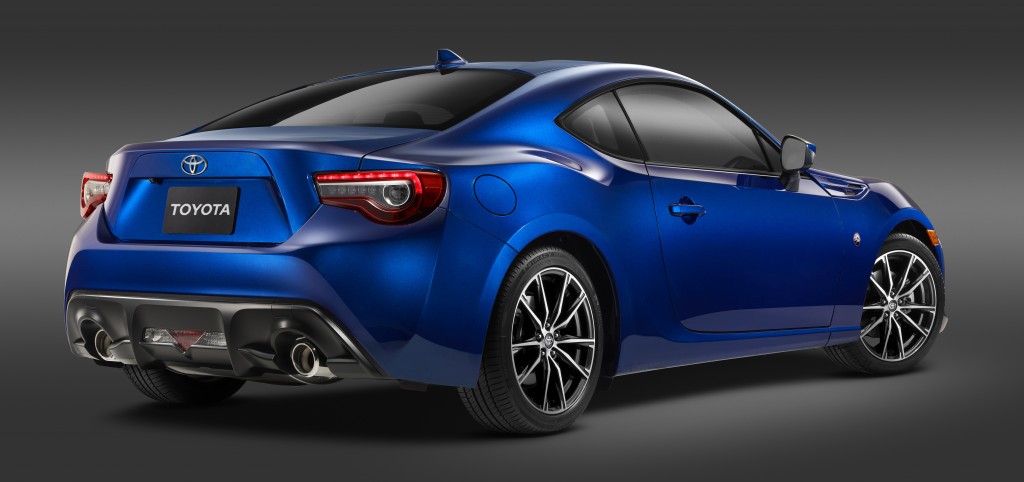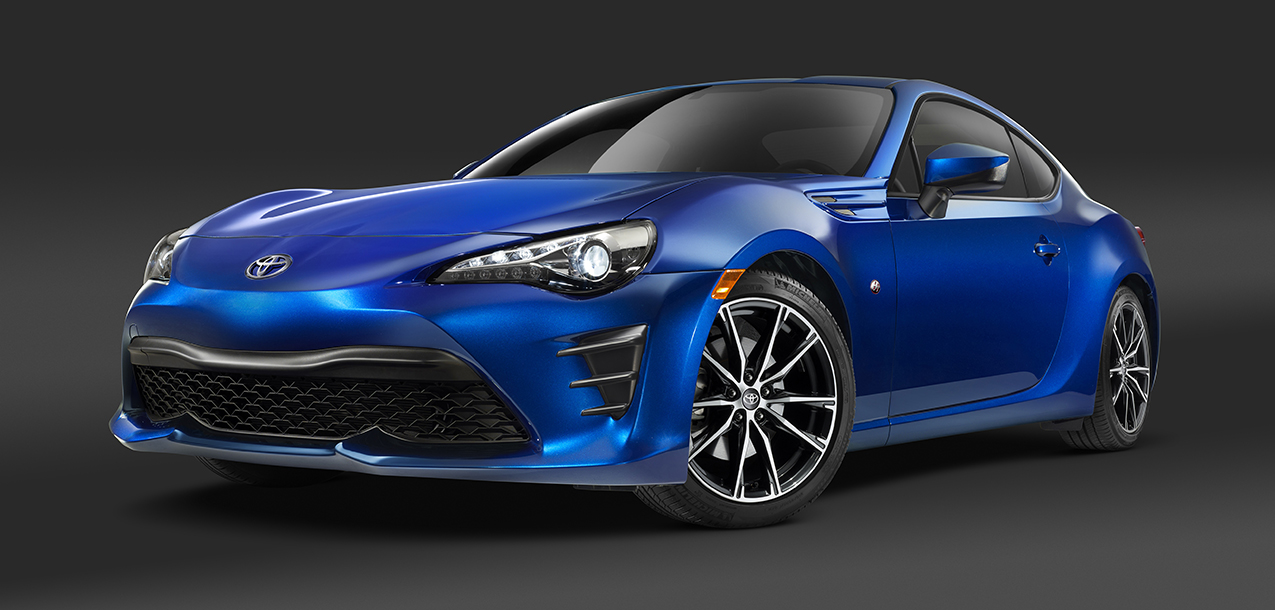
Just a few weeks ago, Toyota announced its intent to retire the Scion marque by September 2016, absorbing the Scion lineup under the Toyota brand. For 2017, its acclaimed Scion FR-S sport coupe will debut at the New York Auto Show as the Toyota 86. Along with new badging, the ZN6 chassis will also enjoy some performance and aesthetic upgrades. At first glance, the, LED headlights and taillights, restyled bumpers and twisted-spoke alloy wheels distinguish the 86 from its predecessors. Under the skin, Toyota improved the 86 with revised shock tuning and spring rates for enhanced handling. The six-speed manual versions benefit from revised gear ratios, Hill Start Assist Control (HAC) and a gain of 5 hp and 5 lb-ft torque from the 4U-GSE (FA20) boxer engine. The 86 logos adorn both the exterior and the interior, the latter of which receives several refinements including a new “Grandlux” material on the instrument panel surround and door panels for a richer cabin environment.
Text by Richard Fong // Photos from Scion/Toyota
Toyota to 86 the FR-S Name
TORRANCE, Calif., March 17, 2016 – With its new home comes a new name and more. The former Scion FR-S will debut as the 2017 Toyota 86 at the New York International Auto Show with interior and exterior changes, as well as suspension and powertrain upgrades. The new Toyota 86 will go on sale at all Toyota dealerships this fall.
“When we announced the transition of the Scion models to Toyota we hadn’t planned on changing the names of our cars, but by popular demand, for our sports car, we decided to adopt the global name of 86,” said Toyota Division Group Vice President, Bill Fay. “Enthusiasts have a strong association with the front-engine, rear-drive heritage of the ‘hachi-roku’ and the dynamic performance it offers.”
In addition to the Toyota 86 name change, two other Scion vehicles will have new designations for 2017. The Toyota Corolla iM and Toyota Yaris iA will join Toyota’s small car line-up.
For its move to Toyota, the 86 sports car adopts more aggressive styling with a larger center intake emphasizing the low, wide stance of the car. The front of the car has a new design with re-configured LED front headlamps and turn signals, and revised bumper. The rear now sports LED tail lamps and a new bumper design. The alloy wheels feature a twisted spoke design and 86 logos have been incorporated into a badge on the front fender, as well as inside the front headlamps.
The interior also features the 86 logo on the new “Grandlux” material used on the instrument panel surround. The same material adds a new, soft feel to the door trim. Drivers also will enjoy new seating material with silver stitching and a sporty steering wheel with integrated audio controls and an 86 logo on the center hub.
Enhanced control and agile performance are achieved through revised shock tuning and a spring rate change. On the manual version of the car, additional performance comes from a gear ratio change and a torque increase to 156 lb.-ft, as well as a five-horsepower increase to 205 hp. Hill Start Assist Control (HAC) helps prevent the car from rolling back on steep hills.
The new Toyota 86 also will be featured in Formula Drift with racers Ken Gushi and Ryan Tuerck. The drivers, along with Series Champion Frederic Aasbo, will be defending the SR by Toyota race team’s 2015 Manufacturers’ Championship.
Joining the Toyota 86 on the show floor will be the Toyota C-HR Concept. The U.S. production version of the C-HR will be shown later this year and the vehicle will go on sale in spring 2017 as a 2018 model.
“We’re very excited to be showing the C-HR Concept as a Toyota and adding it to our line-up next year,” said Fay. “The style and substance of the production C-HR will make it a winner in the hottest segment in the industry.”
The C-HR Concept is named for its Compact size and High Ride height. With four doors and a hatch for supreme functionality, it’s the perfect vehicle for “yuccies,” the young urban creatives who inspired the design.
Underneath the captivating design of the C-HR is a platform featuring Toyota’s New Global Architecture (TNGA). TNGA is an innovative and integrated approach to developing new platforms and powertrains for Toyota. It creates a lower center of gravity, increased body rigidity, more responsive handling and improved ride comfort.
“Even though the C-HR has a high ride height, our focus was on creating a fantastic urban driving car,” said C-HR Chief Engineer Hiro Koba. “My favorite place to be on a weekend is at a race track and I wanted to build a car that I would have just as much fun driving in the city during the week with refined driving comfort and responsive, precise steering.”
More information about the technical specifications for the C-HR will be available when the production version debuts later this year.


